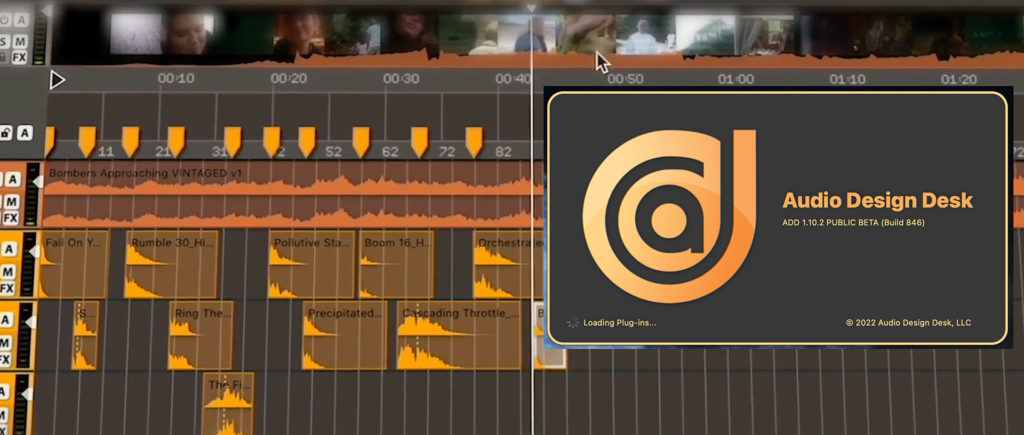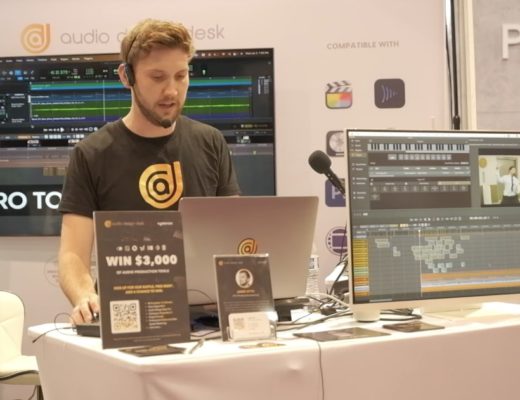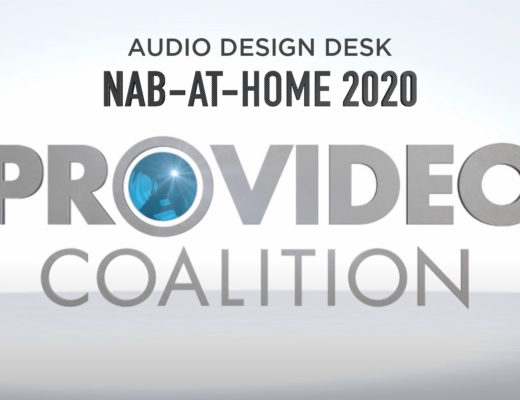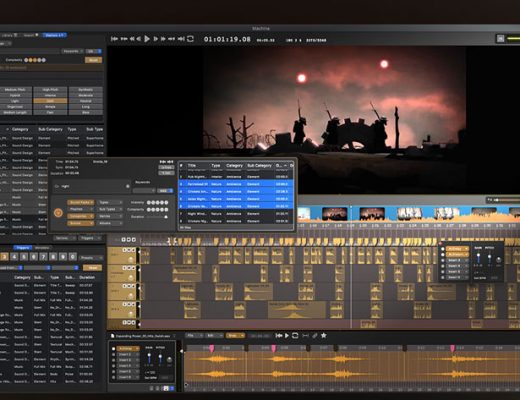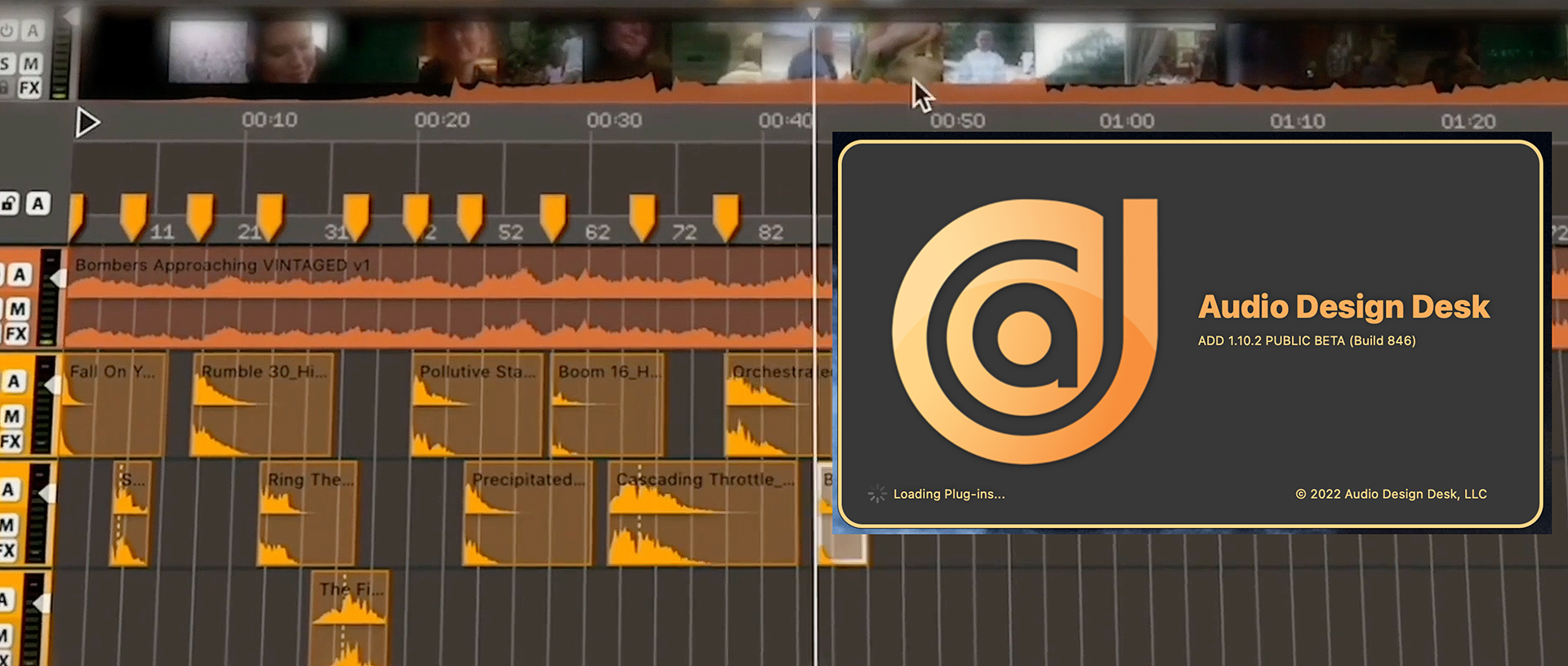
The concept of the digital audio workstation stems from a near-century-old combination of a recording system and a mixing desk. Nearly every modern DAW is still built around that methodology. Gabriel Cowan, CEO and co-founder of Audio Design Desk, sought to modernize the approach with a DAW focused on sound design, using the power of metadata for workflow efficiency. The application was launched a couple of years ago and has since won several trade show awards for innovation, including a Product of the Year Award for audio just last week at the 2022 NAB Show.
Every video editor knows that a kicking sound track can often elevate an otherwise lackluster video. Audio Design Desk is intended to do just that, regardless of whether you are an editor, musician, or sound designer. The application is currently a Mac-only product that supports both Intel and M1 Macs natively. It breaks down into sound design (synthetic sounds, like whooshes, drones, hits, and risers), foley (real world sound effects), ambiences, and music.
In action
When an editor looks for sound effects or music cues, this generally involves manually searching various websites, like PremiumBeat or Artlist, or hunting through a library that’s been accumulated on a local hard drive. You’ll often listen to numerous sounds and music cues, download previews, import them into the project, and audition them in your timeline to see what works and doesn’t. There’s nothing fast nor efficient about this.
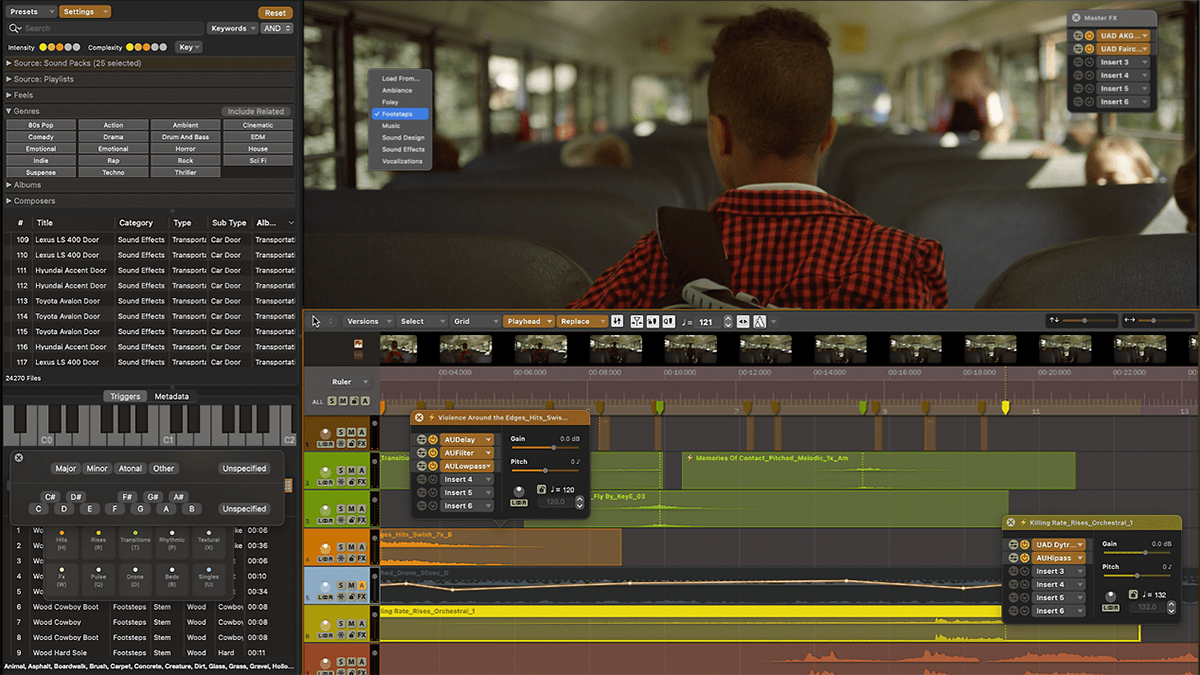
The Audio Design Desk website and YouTube channel offer a number of videos demonstrating how the application improves efficiency. One of their flashier demos shows the editor quickly building up effects for a trailer and a fight scene. Keyboard mapping enables fast sound design simply by hitting designated keys in real-time. This technique is great for synthetic sounds that often enhance trailer scenes and graphics, such as hits when a graphic lands. For foley sounds, like a fight scene, you can trigger different sounds much like using MIDI triggers for music.
Metadata comes into the picture in a couple of ways.
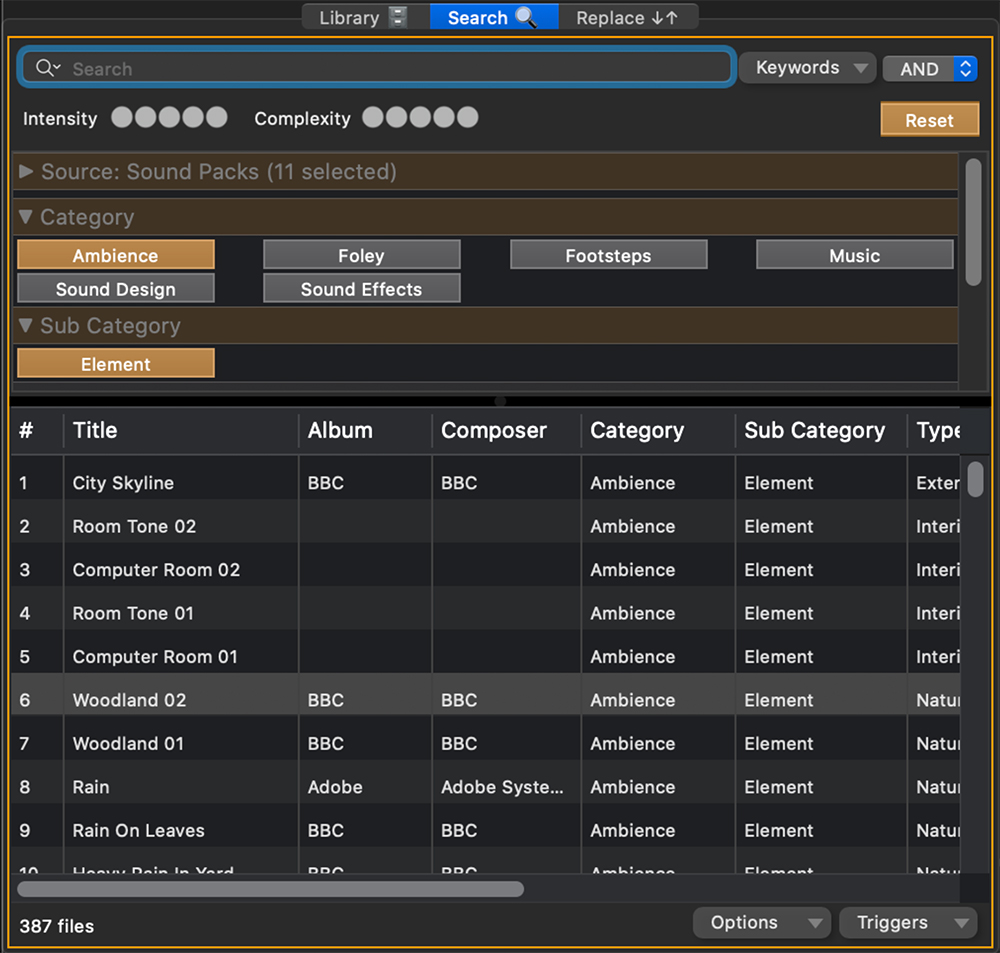
First there’s a powerful replace function. In their demo, they show how sword clangs can be instantly replaced with sounds from a different genre, like light sabers. All sounds have an attack and a release time. Sounds like a whoosh or a synthetic hit or even a fist punch have a leading sound prior to the maximum impact and then a trailing sound. These vary in length with every sound. Audio Design Desk has embedded sync points into these sounds. This means that when you replace one sound with another, the point of maximum impact within the sound effect stays synced to your timeline, regardless of the length of the clip before or after that point. Therefore, less fiddling for the editor or sound designer.
Any modern application that is optimized for the Mac environment is likely going to take advantage of machine learning (ML) and artificial intelligence (AI) features and Audio Design Desk is no exception. Cowan explains, “We actually use both ML and AI. The AI comes in the form of smart sound placement with triggers, categories, replacement settings, etc. The ML is in a few forms. Easiest to see is in the importing of sounds. ADD can guess your metadata – but it doesn’t always get it right. We use ML to pay attention as you fix our guessing to make ADD guess better metadata. So, if you spend 20 minutes reviewing what we guessed and fix it when we get things wrong, ADD will make those adjustments and will guess much better the next time you import sounds.”
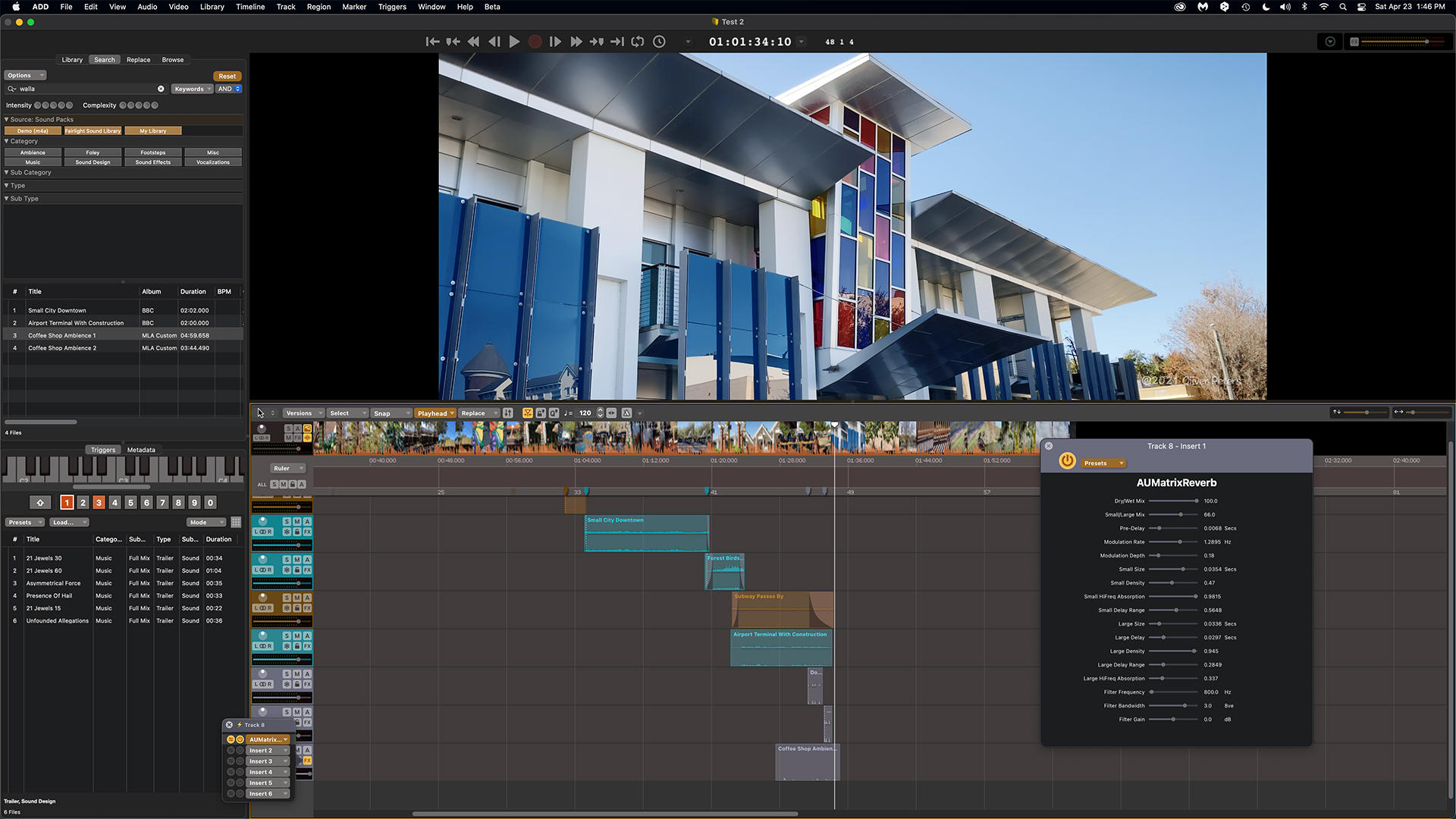
Day-to-day use
OK, demos are nice, but I’m an editor working on simpler shows – broadcast, corporate, etc. I’m not editing intense A-list movie trailers or elaborate fight scenes. Is Audio Design Desk for me? That’s certainly an important question and one I put to the test. My needs for most of these videos typically involve minor sound enhancement and finding the right music cue. This is where the Audio Design Desk Sound Packs come in. These are collections of royalty-fee sounds and music cues. Audio Design Desk offers over 49,000 (and growing) of these for download in .m4a or .wav audio formats. Depending on your pricing plan, you have a certain number available for download, but may also purchase additional Sound Packs. All of these are fully indexed by Audio Design Desk, so at the most basic levels, the application has a great library and search system, which allows me to search by many different criteria.
Furthermore, I can also import other sound libraries that I may already possess.
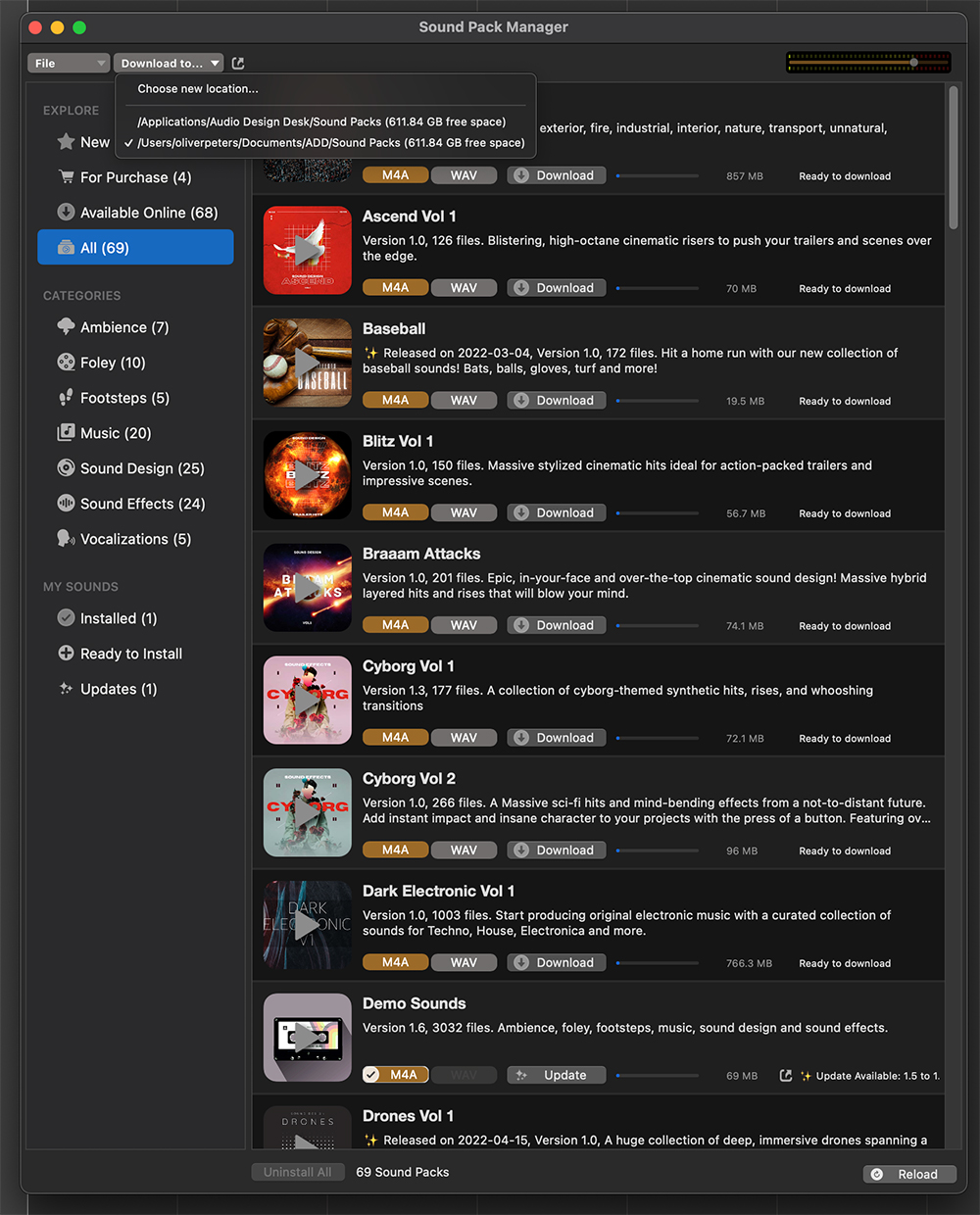
These may or may not include the proper metadata, which is where machine learning plays a role, as Cowan described. For example, Resolve includes the Fairlight sound effects library, which has been indexed by Blackmagic Design. I was able to add this to my Audio Design Desk library and from what I can tell, the application was able to also import the metadata from the Fairlight database. So you aren’t limited to only the Sound Packs from Audio Design Desk. The beauty of the whole approach is that you are always working within a single application and user interface dedicated to sound design, without the need to search websites or other local drive locations and/or applications.
There are several ways to start, but the simplest is to create a new Audio Design Desk project and import a final or reference video file.
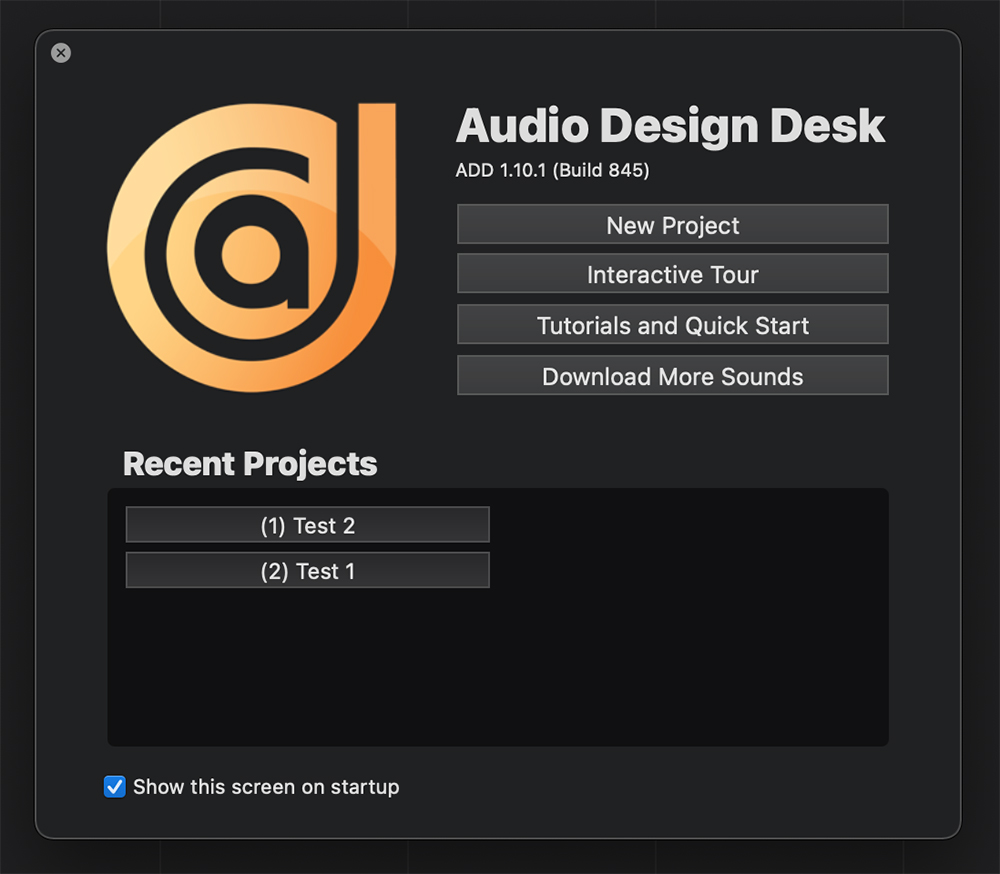
Whatever audio is on that video can be part of the design process or may be muted, depending on what you are doing. Next, search the library, audition effects, and add the appropriate sounds, like foley effects and ambiences. If you have any graphics or transitions to emphasize, add the synthetic sounds to enhance those visuals. Sounds and music can be placed on the same or different tracks. Once you’ve placed the sound or music clip onto a track in the timeline, you have standard DAW editing controls to move and split clips, trim the ends, add fades, and so on. Since Audio Design Desk is a fully functioning DAW, you can also adjust and keyframe audio levels and apply Apple core audio and third-party AU plug-ins to any track.
Getting your project out of Audio Design Desk
You can bounce (export) the mix from the Audio Design Desk project in the same manner as with any other DAW. If your intent is to end up with a final mix using only Audio Design Desk, then mix levels and filter effects have to be correct. There are several bounce options, including a full stereo mix, individual tracks, or a multichannel .wav file. However, editors are used to roundtrips between their favored NLE and other applications.

It’s easy to export your Audio Design Desk project back to your favorite NLE, like Premiere Pro or Final Cut Pro, or a DAW, like Pro Tools, using FCPXML, XML, or AAF protocols. When doing so, the application will bounce out the sound clips and the selected edit list format into a separate folder. Inside the NLE, import the XML, FCPXML, or AAF file. The sound effects and music clips will then populate the timeline in the same track configuration as they were in the Audio Design Desk timeline. In this scenario, the audio that existed on the reference video along with any plug-in effects will not be part of the roundtrip back into the NLE or DAW, since it’s assumed your final mix will be done there.
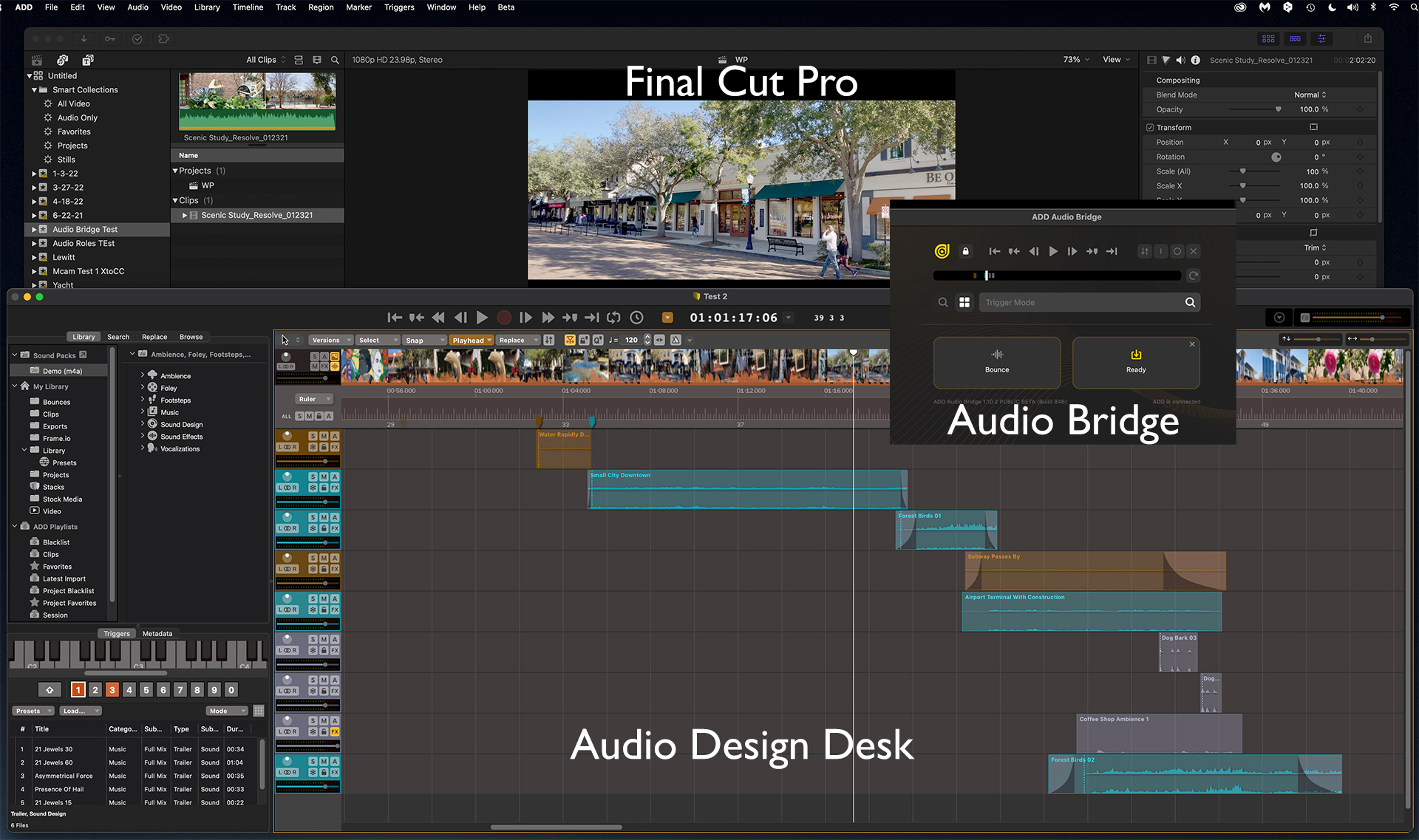
Audio Design Desk announced two extensions for Final Cut Pro editors at NAB. Those are the ADD Audio Bridge and the DAW Bridge. ADD Audio Bridge syncs your FCP timeline with Audio Design Bridge’s timeline. DAW Bridge syncs FCP to other DAWs, like Logic Pro or Pro Tools. To use Audio Bridge, launch it from the FCP extensions menu icon and drop your FCP project (sequence) onto the Audio Bridge panel. This will launch Audio Design Desk and enable you to operate the two applications in tandem. The picture comes from FCP, but the sound comes from Audio Design Design. ADD Audio Bridge links the two timelines and takes care of maintaining sync between them. Very cool! DAW Bridge requires a few more steps and macOS 12.0 or higher, but is equally impressive.
Conclusion
Audio Design Desk offers three pricing plans (Basic, Personal, and Professional) as a monthly or annual subscription, or as a perpetual license. Two computers may be activated per license and there’s a 30-day trial period to get started. The three plans are differentiated by their feature set and the number of included Sound Packs. The Professional plan includes the largest number of Sound Packs, but also extends the royalty-free use to broadcast TV shows and commercials.
I can’t tell you whether or not Audio Design Desk is perfect for you. No two situations are the same. But I do know that enhancing your soundtrack always helps it to stand out against the work done by your competitors. This application is one of those tools that not only improve your product but does so in a fun and efficient manner.

Filmtools
Filmmakers go-to destination for pre-production, production & post production equipment!
Shop Now